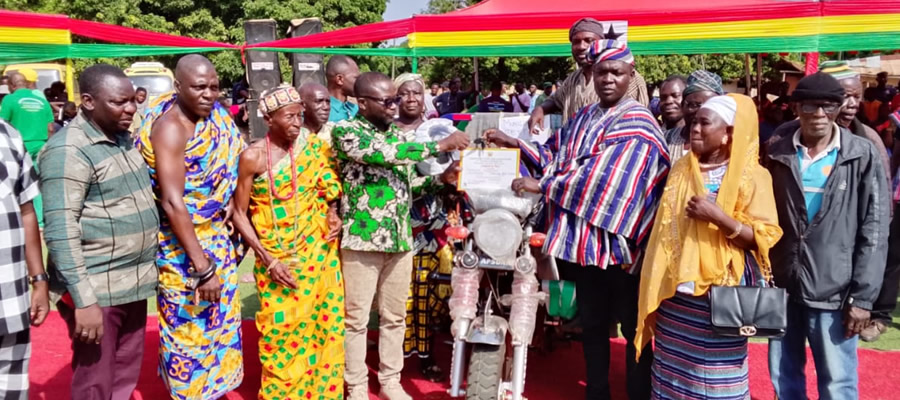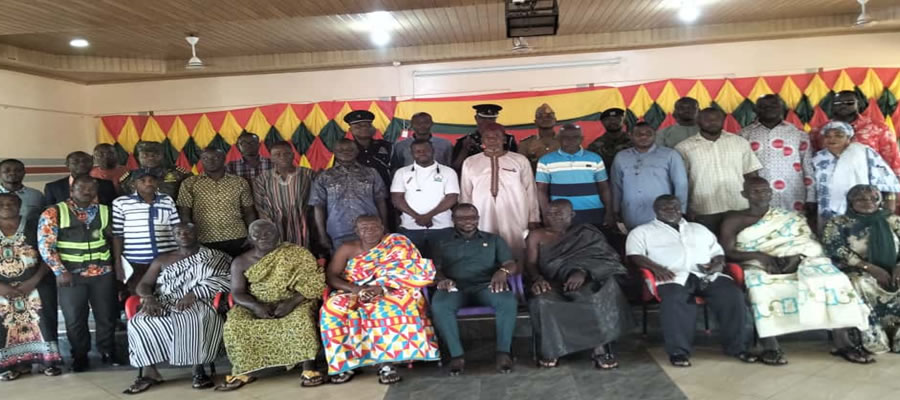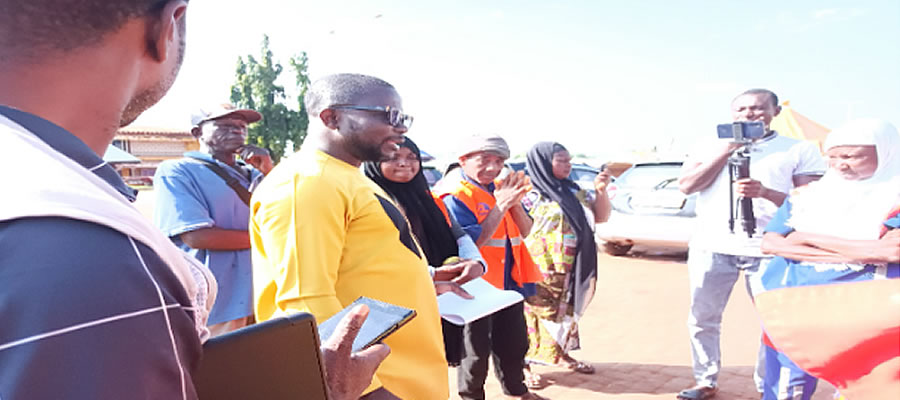

Literacy
The question on literacy referred to the respondent's ability to read and write in any language. A person was considered literate if he/she could read and write a simple statement with understanding. The question on literacy was asked only of persons 11 years and older.
Education
School Attendance
Data was collected on school attendance for all persons three (3) years and older. School attendance refers to whether a person has ever attended, was currently attending or has never attended school. In the census, school meant an educational institution where a person received at least four hours of formal education.
Although the lower age limit of formal education is six years for primary one, eligibility for the school attendance question was lowered to three years because pre-school education has become an important phenomenon in the country.
Level of Education
Level of education refers to the highest level of formal school that a person ever attended or was attending. This information was obtained for persons 3 years and older.
Literacy and Education
Education is an important aspect of social development. It is the process of acquiring knowledge, skills, values and attitudes to fully develop individual capacities for societal well-being. There is a relationship between education, human resource development and economic growth (United Nations Development Programme, 2011). Countries therefore place emphasis on educational policies in designing their plans to accelerate development. It is for this reason that of the eight Millennium Development Goals (MDGs) one of the goals (MDG 2) is achieving universal primary education by 2015 (United Nations Development Programme, 2010). Two indicators used to track MDG 2 are Net Enrolment Ratio (NER) in primary education and proportion of people starting grade1 who reach the last grade of primary education. In addition, one of the indicators for MDG 3 is the ratio of boys to girls in primary, secondary and tertiary education. Education is also one of the three variables used for the calculation of the Human Development Index (HDI) (UNDP, 2010).
The proportion of people literate in a Ghanaian Language and English could be attributed to the Functional Literacy Programme of the Ministry of Education in the past two decades. The number of people that have been covered by the programme within the period has been encouraging. According to the Non-Formal Education Division report (2010) as cited by Ghana Statistical Service, ten batches of learners enrolled between 1997 and 2010. Enrolment for the ten batches of learners during the 13-year period was over 1.6 million. Between 1993 and 1998 enrolment exceeded 200,000 per annum, however, in the three most recent batches enrolment were less than 40,000 per annum. Average graduation rates were almost the same for males 85.2 percent and females 84.7 percent. (GSS-2010PHC).
Table 3.7 shows the percentage distribution of the population 11 years and older, by sex, age and literacy status. The table indicates that more than a half of the population (60.7%) in the Municipality are literates. There are more non-literate females (45.8%) than non-literate males (32.6%).
The population 11years and older by sex, age and literacy status is shown in Figure 3.3. The figure further indicates that a higher proportion of the population aged 11years and older are literate in English and Ghanaian language (55.2%) with English only 40.6 percent.
This is followed by Ghanaian language only 3.7 percent. English and French, English, French and Ghanaian language has the same and least proportions of 0.2 percent and 0.4 percent respectively.
School attendance
For education, the questions were asked of persons 3 years and older. The questions were on full time education (past and present), level, and highest educational level completed/attended in the past or currently attending.
Table 3.8 presents the population 3 years and older by school attendance, level of education and sex. Of the 35,379 persons aged 3 years and older who are either in school or have ever attended school in the Municipal, 3,417 representing 9.7 percent are in the Nursery, 16.8 percent in Kindergarten, 49.1 percent in primary and 16.6 percent in JSS/JHS. SSS/SHS has about 6.4 percent. Tertiary has a proportion of 0.9 percent.
Table 3.8 further shows that 21,499 persons attended school in the past; none attended either Nursery or Kindergarten. This could be due to the fact that about two decades ago, most of the schools in the Municipal were not having these departments, 18.6 percent and 24.8 percent of males ever attended middle school and JHS.
Females have about 33.2 percent who ever attended JHS/JHS and 33.6 percent for primary school. Middle school has a proportion of 14.7 percent.
Date Created : 11/16/2017 7:55:36 AM












 facebook
facebook
 twitter
twitter
 Youtube
Youtube
 +233 593 831 280
+233 593 831 280 0800 430 430
0800 430 430 GPS: GE-231-4383
GPS: GE-231-4383 info@ghanadistricts.com
info@ghanadistricts.com Box GP1044, Accra, Ghana
Box GP1044, Accra, Ghana